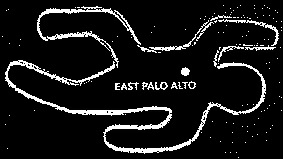Crime
Speech to the Menlo Park City Council (9 February 1993) after John Greenleaf Whittier
My name is Tom Sharp.
I live at 440 Gilbert Avenue in the Willows.
As I was thinking about what to say to you
about crime in my neighborhood
I read the Times Tribune of Thursday February 4th.
This issue featured stories about homicides in
East Palo Alto.
The front-page headline:
“THE CORE OF KILLERS
40 to 50 young men do most of the
shooting.”
If we had 40 to 50 such young men in Menlo Park,
I would not need to tell you
how important this problem should be to you.
Under this article is a summary of the most
sensational events:
“City’s most savage murder
cases.”
I quote:
In the city that had the highest per-capita
homicide rate in the country in 1992, the most savage murder
suspect may have been Walter Joseph Cook III, a 20-year-old East
Palo Alto resident charged with slaying three people in less than
four months.
The first of these murders occurred one year ago
tonight:
The Feb. 9 killing of 45-year-old Menlo Park
resident Earnest Saddler, who was beaten to death with boards on
Menalto Avenue.
This part of Menalto Avenue is in East Palo
Alto,
but Earnest Saddler lived three doors from me.
A 45-year-old neighbor
could be beaten to death with boards
and we could still think this is East Palo Alto’s
problem.
Being beaten to death with boards
doesn’t sound to me like a good way to
die,
but, for me, the most alarming piece in the paper
was not these terse retrospectives;
it was an advertisement
on page A-9 below the Police and Fire Report:
The eye catcher: A chalk outline of a dead man,
a bullet through his heart; the name on the man: East Palo
Alto:

 ast Palo Alto has the highest murder rate in
the U.S. Ride with the 911 emergency teams that must respond to
these brutal crimes. Our KTVU camera crew works the graveyard shift
in Murder Capital U.S.A. Starts tonight on
The ORIGINAL 10 o’clock News.
ast Palo Alto has the highest murder rate in
the U.S. Ride with the 911 emergency teams that must respond to
these brutal crimes. Our KTVU camera crew works the graveyard shift
in Murder Capital U.S.A. Starts tonight on
The ORIGINAL 10 o’clock News.
 NEWS YOU TRUST, TIME AFTER TIME.
I have been going door to door in my
neighborhood
with the petition that has been presented to you to
tonight,
and I want you to realize
that you have the signatures of some of the victims
of the graveyard shift in Murder Capital U.S.A.
The victims are not just on the East Side;
they are on our side.
The story doesn’t just start tonight;
it’s been going on for more than a year.
The victims are not only our murdered neighbors.
The victims are neighbors who are afraid to answer their
doors,
neighbors traumatized by machine-gun fire in their front
yards,
neighbors violated by burglars having been in their
bedrooms,
neighbors angry at kids who are angry and who throw rocks,
neighbors withdrawing from the neighborhood they live in,
a neighborhood that is increasingly
the domain of dangerous strangers.
I came here tonight to tell you this,
hoping that you do not deny the problem,
or its consequences,
or its solution.
When a neighbor is bleeding on the pavement,
you don’t ask whether he can pay for the treatment,
you don’t say you’ll have to think about it for
a while,
you don’t reach for excuses,
and you don’t consider his suffering
another form of entertainment.
NEWS YOU TRUST, TIME AFTER TIME.
I have been going door to door in my
neighborhood
with the petition that has been presented to you to
tonight,
and I want you to realize
that you have the signatures of some of the victims
of the graveyard shift in Murder Capital U.S.A.
The victims are not just on the East Side;
they are on our side.
The story doesn’t just start tonight;
it’s been going on for more than a year.
The victims are not only our murdered neighbors.
The victims are neighbors who are afraid to answer their
doors,
neighbors traumatized by machine-gun fire in their front
yards,
neighbors violated by burglars having been in their
bedrooms,
neighbors angry at kids who are angry and who throw rocks,
neighbors withdrawing from the neighborhood they live in,
a neighborhood that is increasingly
the domain of dangerous strangers.
I came here tonight to tell you this,
hoping that you do not deny the problem,
or its consequences,
or its solution.
When a neighbor is bleeding on the pavement,
you don’t ask whether he can pay for the treatment,
you don’t say you’ll have to think about it for
a while,
you don’t reach for excuses,
and you don’t consider his suffering
another form of entertainment.

